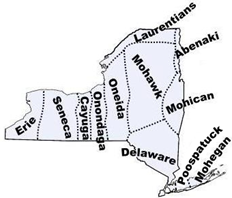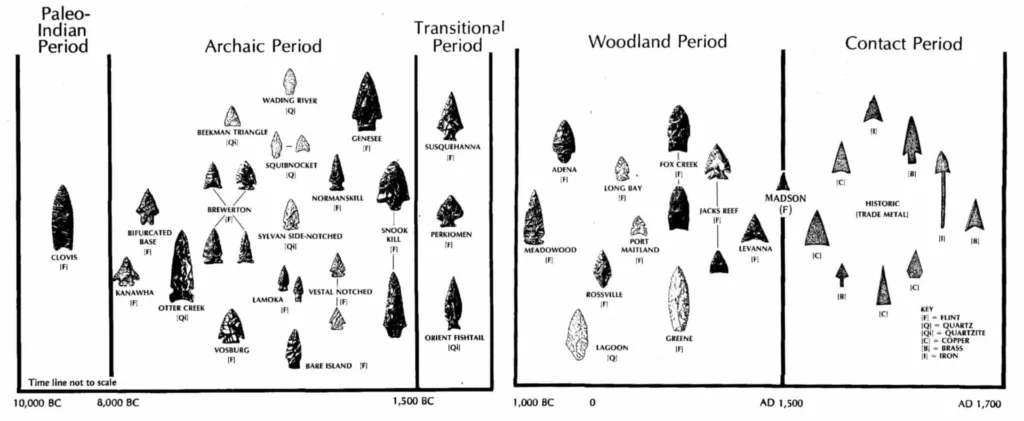NATIVE AMERICANS in the Oneonta, NY area

Nomadic Paleo-Native Americans were traveling through New York at least 13,000 years ago, following large game like caribou. Over time they developed more permanent seasonal camps, utilizing the area’s rich rivers, forests, and fertile valleys. Tribes and confederacies formed, culminating around A.D. 1200 when the Seneca, Cayuga, Onondaga, Oneida, and Mohawk united as the Iroquois Confederacy.
When European settlers arrived in the 1700s, Natives were pressured off their lands. The Revolutionary War and especially the Sullivan-Clinton Campaign destroyed Iroquois villages and crops. Reminders of their former presence remain, including many place names:
- Susquehanna: from the Susquehannock, meaning “people of the muddy river”)
- Oneonta: from Mohawk word meaning “open rocks” or “rocks sticking out”
- Otsego: several meanings, including “place of the rock”, “meeting place”, and “clear water”
Early roads in the Oneonta area followed Indigenous footpaths; Main Street itself traces a major trail linking the Great Lakes, New England, and the Hudson River.
Archaeological evidence of Native American presence found in the area, especially near the river and streams, includes:
- Stone Tools (Lithics): cutting/ scraping tools, hammerstones, pestles, net sinkers
- Projectile points: indicate different stages of occupation (see chart below)
- Ceramics: Pottery fragments
- Organic Materials: animal hides, artifacts carved from wood, bone, and horn
- Post-Contact Materials: (after European contact): glass trade beads, scraps of brass, blacksmith-made iron axes
- Site Features: food remnants, firepits, patterns of post holes from structures

